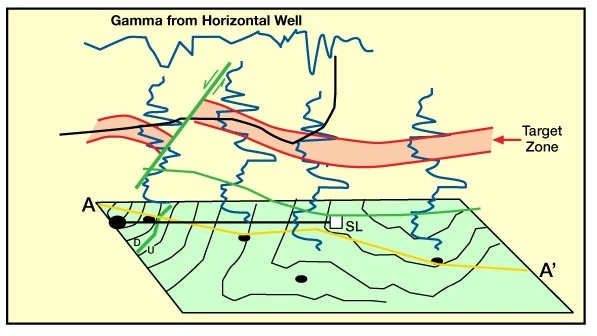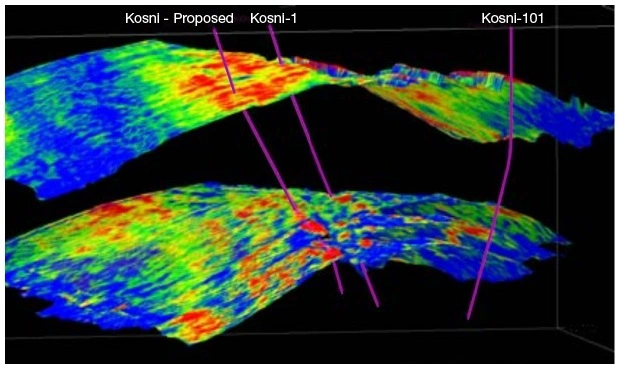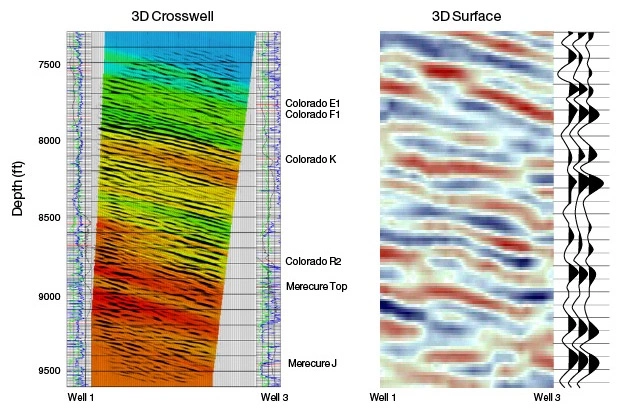Migrated and Unmigrated Sections and Line Ties
Animation 1 reminds us that on a dip line the reflection occurs updip from the vertical through the point of observation on the surface, but that an unmigrated section displays the reflection on the vertical. The process of migration moves the reflection back, by a distance of h, to where the reflection should be.
Location of a reflection on a dip line and a normal unmigrated section Animation 1
Animation 1
Figure 1 is an idealized counterpart of Animation 1A.
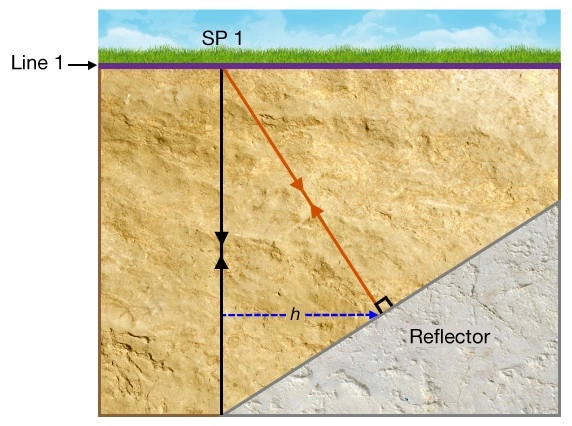
Figure 2 extends the situation into three dimensions. We see that on a strike line (Line 2) the reflection still comes from updip of the vertical plane of the section, but is again presented as being in that vertical plane. However, the reflection appears to have no dip, and therefore the process of migration leaves it substantially unchanged. Thus, migration changes the reflection times on dip lines, but does not change them on strike lines. It follows that sections which tie properly on unmigrated sections do not tie, in general, on migrated sections.
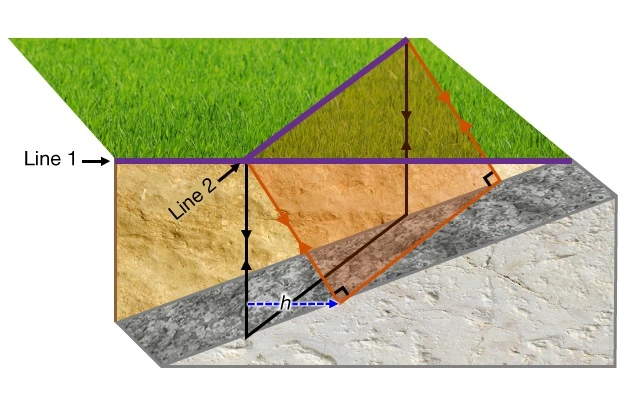
Let’s discuss how to handle these issues. We like the improved clarity of the faults on migrated sections. We accept that where a reflecting surface is very rough (Figure 3, for example), migration is necessary before we can even begin to pick it. But we are reluctant to lose that confidence-building check that we get by tying unmigrated sections at the line intersections.
Comparison of Unmigrated and Migrated Seismic Sections
compare the two images
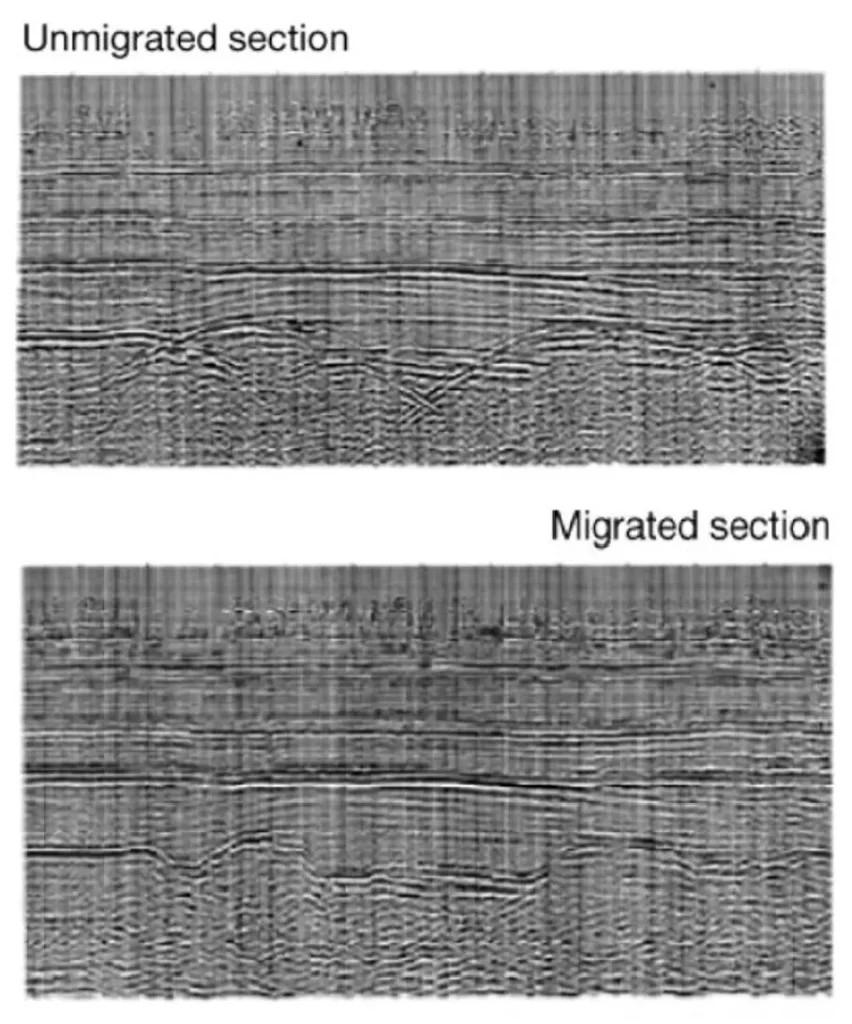
The optimum process depends on the circumstances:
- Where the structures are smooth, gentle and unfaulted, and there is no problem of following the continuity of the target reflection(s), we prefer to use unmigrated sections. This gives us our line ties. It places the structural axes correctly, but makes the anticlines broader than they should be, and the synclines narrower, as seen in Figure 4. We time, post and contour the unmigrated reflection(s), thus obtaining an unmigrated time structure map. Finally we migrate the contour map, and so obtain the best of both worlds.
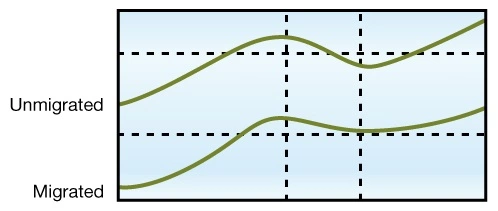
- In fact, there are few prospective areas where the structures are smooth, gentle and unfaulted. Consequently, the vast majority of seismic sections on dip lines, or across faults, are clarified by the migration process.
Many interpreters call for both migrated and unmigrated sections on all lines, whatever their orientation. This invariably brings up the concern as to what to do when the unmigrated sections can be picked, but the migrated sections are clearer locally. We prefer to pick the unmigrated sections, but we use the migrated sections to guide our picking. Then we proceed, as before, to the migration of the unmigrated contour map. In this last stage, it helps if we can specify, from the migrated sections, the true position and throw of the faults. - As the complexity of the geology increases, we come to some point where the improved clarity of the migrated section outweighs the comfort of exact line ties. If we have a grid of lines which are close to being on dip and on strike, and if the faults are generally on strike with the structure, we pick and time the migrated dip lines first. Next, we pick and time any strike lines which happen to cross the dip lines in zones of small dip; there we expect good ties. Then, in the vicinity of the other line intersections, we search the dip-line sections for any identifiable reflection feature (perhaps a small fault) that is recognizable on both migrated and unmigrated sections (Figure 3), and we assess how far the migration process has moved it. The distance h tells us where the line intersection really is in the subsurface.
We then time the reflection on the strike line. We do not use the absolute reflection times, but only the differences of reflection time relative to the times at the line intersections. These differences are then posted on the map in the time subsurface position of the strike line (which is, of course, the distance h updip from its surface position). Finally, we contour the absolute reflection times from the dip lines, using the time differences on the strike lines to guide our contouring between the dip lines. - In the real world, many lines are neither on strike nor on dip, reflection quality is variable, and faults cross all the lines at unfavorable angles, so interpreters do the best they can. Aiding interpreters is the first rough map which shows the highs, the lows, the steep dips, the shallow dips, the flat areas, the fault locations, the zones of bad data, and any other obvious anomalies. From these indications, we have a crude picture of the structure, and the likely effects of migration and poorly migrated events.
It is important that interpreters carefully think about their method of incorporating migrated and unmigrated sections and understand the allowances they make at the line intersections.
 Petro Shine The Place for Oil and Gas Professionals.
Petro Shine The Place for Oil and Gas Professionals.

